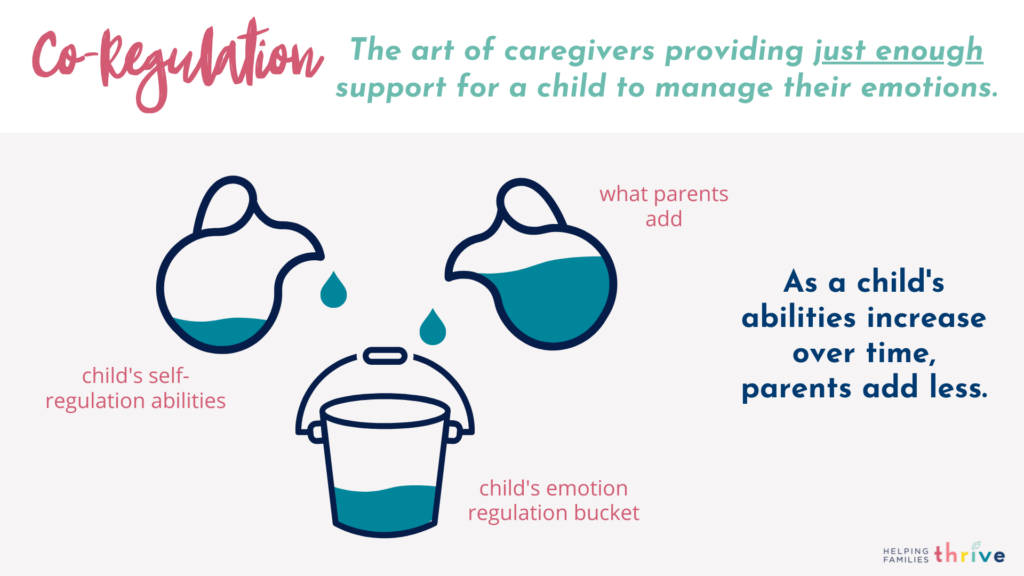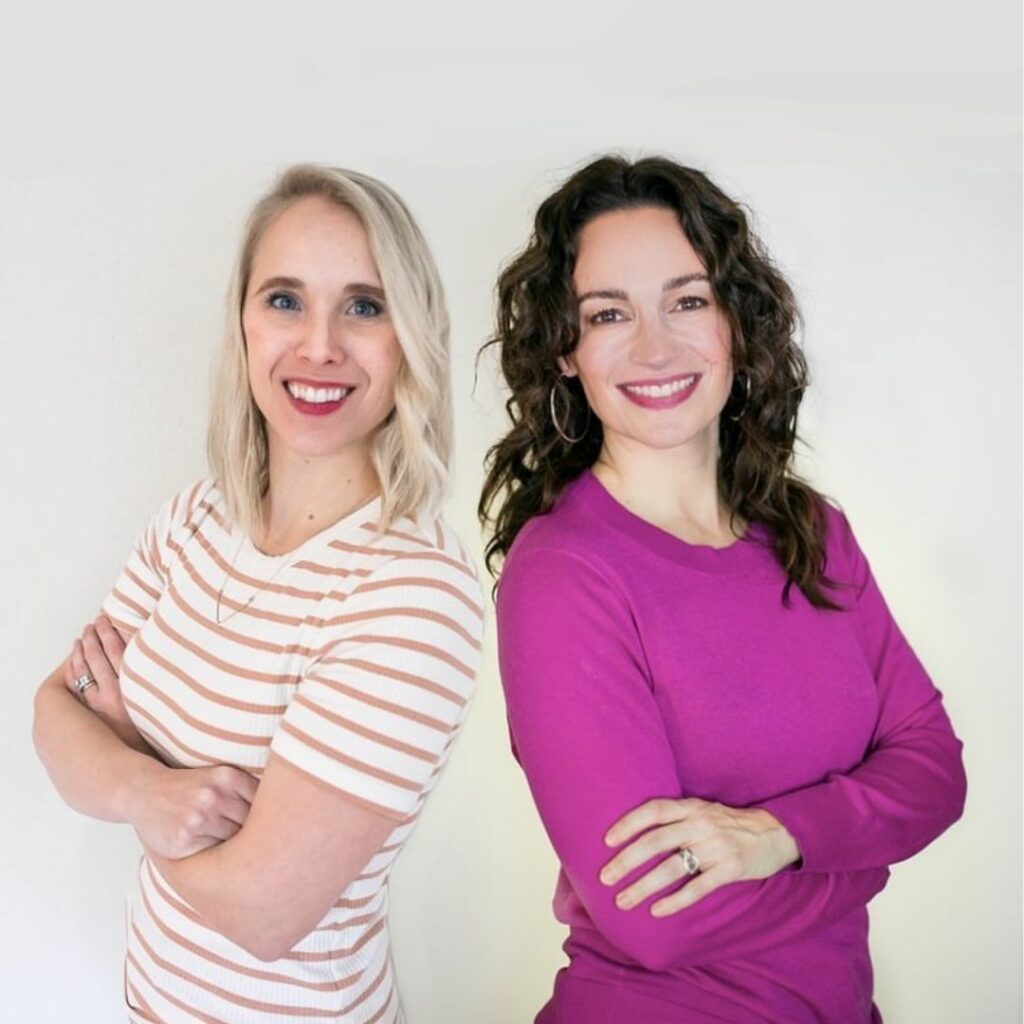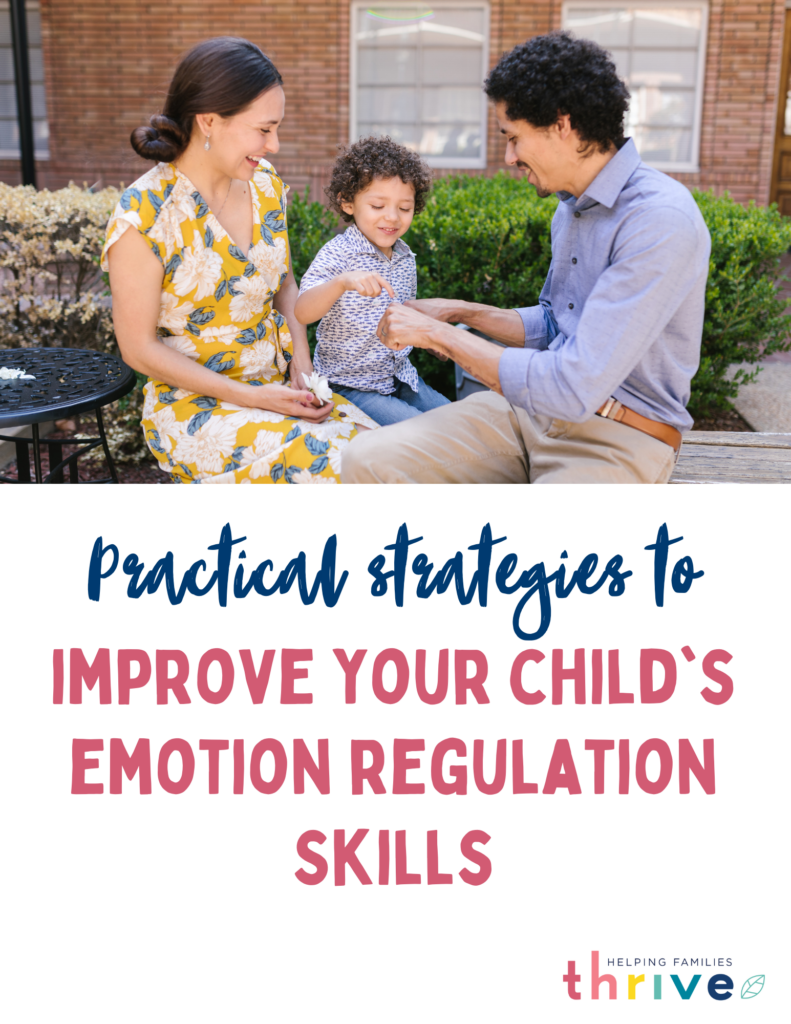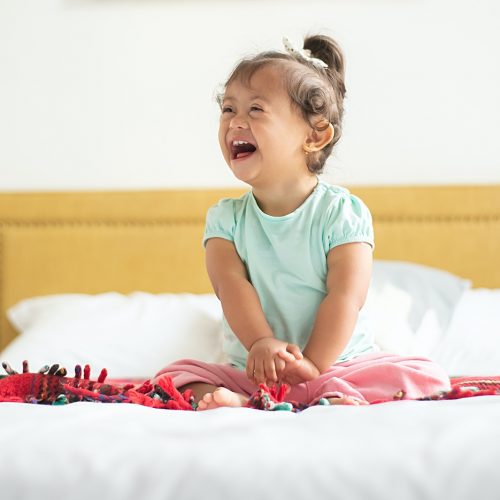
What is self-regulation & why does it matter?
Most parents would agree that one of their jobs is to help their child learn to manage their feelings. This ability to manage thoughts, feelings and behaviors is called self-regulation.
Self-regulation includes many important skills, such as:
- Impulse control (e.g., growing a mental “pause button” on your brain)
- Identifying the present emotion and selecting a coping strategy
- Organizing and planning behavior to solve problems constructively
- Sustaining attention in order to monitor your own and others behavior as you regulate
Children with stronger self-regulation abilities are more likely to perform well in school, have stronger relationships with adults and peers and have fewer behavioral challenges. Clearly, self-regulation is an important skill worth understanding and promoting in our children!
So, how do we as parents and caregivers do this?
Co-regulation leads to self-regulation
While self-regulation refers to an individuals’ processes and abilities, this skill set actually develops through the interactions with others. That is, a child first learns to regulate with others and then is gradually able to use these regulation tools more independently. This process of caregivers providing support for kids to develop self-regulation is referred to as co-regulation.

You may be wondering what exactly you should be doing as a parent in order to ‘co-regulate’ effectively.
Thankfully, research can help guide us. A recent series of research briefs summarized all of the studies on co-regulation. One of the biggest take-aways from this work is that the development of self-regulation is dependent on predictable, responsive, and supportive environments.
Sounds reasonable so far, right?
Yes! But here is where we see lots of misinformation on social media and the internet. The term “co-regulation” has been misinterpreted to mean that parents must stay next to the child during every emotional or behavioral storm. Additionally, we often see claims that co-regulation is all about physical proximity.
Not only is this inconsistent with the actual complex, nuanced and scientific definition of co-regulation, but blindly following this advice can lead to increased emotional storms (and potentially unsafe behaviors) for both parents and children. It can also inhibit the development of self-regulation.
The most common myth perpetuated in social media parenting information is the idea that co-regulation means that your child needs you right beside them through the entirety of each challenging emotion and behavior, no matter their age or the situation, in order to develop healthy emotional regulation skills.
– Helping Families Thrive (HFT)
The emotion regulation bucket
As always, our mission at HFT is to provide accurate, evidence-based information to parents and providers. This means no over-simplification or click bait headlines that scare parents into or out of certain parenting practices. Like with many parenting topics, co-regulation is nuanced. The reality is that co-regulation includes a variety of parent behaviors — including being responsive with interactions much of the time, over time, and with just the right amount of support.
A helpful analogy for co-regulation that came from the aforementioned research brief is the emotion regulation bucket.
Imagine each child has a emotional-regulation bucket. In any given situation where a child needs to regulate their feelings, their bucket is filled by two pitchers. The first pitcher is the child’s own self-regulation abilities, and the second is what the parents need to add (the co-regulation pitcher).

How full a child’s self-regulation pitcher is depends on things such as age, developmental differences (e.g., ADHD), and life experiences (e.g., trauma). How much is in a parent’s pitcher depends on a variety of things, as well, such as parent mental health and environmental supports (e.g., poverty and chronic stress).
As a child learns to calm their inner storms (or tsunamis for some kids!), less caregiver co-regulation is needed. This means the younger a child is, either based on their actual age or their emotional developmental age, the closer caregivers generally need to be to the action. Gradually, we increase the space and pause more before intervening to allow children an opportunity to access their developing self-regulation skills and assess how much, if at all, we need to increase support.
Avoiding extremes is important
As with so many things in parenting, avoiding extremes is important. As we talk about in this post, research has consistently shown that the most ideal parent style is one that balances both high levels of warmth with high boundaries. Similarly, research with anxiety in children shows that anxiety symptoms get worse when parents are too protective or too controlling in response to their child being anxious.
This means that our goal is to avoid sinking to extremes such as warmth without boundaries (permissive parenting) or boundaries without warmth (authoritarian parenting). This same thinking applies to co-regulation. Essentially, we have to take a balanced approach keeping the emotion regulation bucket analogy in mind.
Take a look at the following examples of ways parents accidentally display extreme responses:
Scenario 1: A young child is upset. The parent thinks, “you’ve gotta learn to buck up” or “they’ll get over it” or “I will not reward this anger with attention” and doesn’t provide any support, when in fact their child’s pitcher is empty. The child simply didn’t have the skills to regulate and there was not enough support given via co-regulation.
Scenario 2: A child is upset. The parent swoops in immediately and dumps their entire co-regulation pitcher into the child’s bucket. In this case, the child’s self-regulation bucket sits there full, but unused. The child has skills, but does not have the opportunity to use and grow their skills.
Scenario 3: For some kids, their emotion regulation bucket is just on fire. They seem to burst into flames with little notice and the flames are HOT! In moments of really big dysregulation, and for kids who tend to get explosive, sometimes parental attempts at co-regulation (such as reasoning with their child) are like fuel on the fire. The child yells louder, perhaps starts to get more aggressive and hits the parent. The parent then attempts to hold the child’s arms down which sends the child into a rage, and both parents and child end up yelling or potentially getting hurt. In this scenario, physical proximity and verbal coaching was NOT regulating for anyone.
Scenario 4: A really upset child says, “go away! Give me space! Just leave me alone!!!!” The parent doesn’t want to leave the child alone (because they’ve heard that’s “wrong”) so they continue to stay right next to their child against their wishes. They wonder if perhaps the child is saying no “but means yes” (does this sound like a familiar “no means yes” message?). This leads to more dysregulation from the child and sends a confusing message about consent. When children use their words (instead of fists) to communicate their needs (including the need for space) we need to show them that we hear them and not slip into a dangerous “no means yes” situation.
What to do instead
Okay, now that we’ve seen some examples of what NOT to do, let’s discuss what parents can do to effectively co-regulate. Interestingly, there are three different categories of co-regulation behaviors, which include: 1. building a warm relationship, 2. having structure and setting limits, and 3. teaching self-regulation. Co-regulation is NOT just cozy corners and cuddles! It’s quite nuanced and it actually has more to do with how you support your child outside of heated moments! (For more about effective prevention methods, see this post.)
So where do we start? You cannot implement any of the nuanced co-regulation strategies until you establish this one essential habit. When your child’s emotional storm arises, we want you to first pause before responding. Take a breath. Briefly validate. Observe the child’s response. Then, adjust as needed, which may include increasing words, touch and proximity, or decreasing these things.
Pause. Breathe. Validate. Observe. Adjust. Repeat.
Let’s take a look at what this might look like. In the examples below, the children respond differently to the parental attempts at co-regulation — thus, the parent behaviors are not identical. But, what they share is the PAUSE to avoid responding in a reactive fashion, and instead slow the whole thing down.
Example with Child 1
Child: “It’s not fair! I ALWAYS have to clean up and she doesn’t!”
Parent: PAUSE and BREATHE.
Child: “I’m NOT doing it!”
Parent: VALIDATE by saying “cleaning is a bummer” while nodding (see this post for more about validating).
Child: “It’s SO stupid!” (volume is lower, wiping tears — words didn’t seem to escalate things here)
Parent: ADJUST by offering a bit more verbal and physical comfort. Scooch a bit closer, pause, and say “I get it bud.”
Child: Sits quietly next to parent and appears calmer.
Parent: OBSERVE. Waits for a couple minutes of regulation and then follows through with “I’m gonna go work on cleaning up my kitchen mess . I’m not so stoked about it, but I’ll get it done.” (modeling healthy coping aloud). “Let me know when the clothes are in the hamper and we can (next thing to look forward to).
Example with Child 2
Child: “It’s not fair! I ALWAYS have to clean up and she doesn’t!”
Parent: PAUSE and BREATHE.
Child: “I’m NOT doing it!”
Parent: VALIDATE by saying “cleaning is a bummer” while nodding (see this post for more about validating).
Child: Child mocks, “‘cleaning is a bummer’ BE QUIET DAD!” (volume increases)
Parent: PAUSE (no added words or increase to proximity)
Child: Continues to rant to self but not escalating
Parent: OBSERVE, wait for a couple minutes of regulation and then follow through with “I’ll be in the kitchen working on my cleaning up if you need me.”
Child: “I won’t need you. This sucks.”
Parent: Continue to allow time and space while child calms down. Hold the boundary (child must clean up toys) but wait to re-engage.
As you can see, these two children responded quite differently to an adults’ attempts at co-regulation. The beauty in each is that the parent PAUSED. For more on compassionate limit setting, get our Essentials eCourse, or read more about Wise Withdrawals and 4 C’s of Limit Setting.
Your parenting mantra when your child’s becomes dysregulated: “Pause. Breath. Validate. Observe. Adjust. Repeat. Move forward.”
Remember, co-regulation is a skill that develops over time and at different rates for different people depending on their individual wiring and their life experiences. Your child’s response to a hug, and “I see you’re upset buddy” may be to hug you and feel comforted. Your friend’s child may respond to the same co-regulation attempts by becoming more upset. This is not a parenting contest. There is not a one-size-fits-all script.
For more on the nuance of the 3 research-based pillars of co-regulation, see this post. For a comprehensive, step-by-step program on how to implement these (and other) top evidence-based tools, we’ve got you covered in our Evidence-Based Essentials of Parenting Course!
Remember, at HFT we are all about less shame and more support. Evidence and Balance. You’ve got this.
References
Rosanbalm, K.D., & Murray, D.W. (2017). OPRE Brief #2017-80. Washington, DC: Office of Planning, Research,
and Evaluation, Administration for Children and Families, US. Department of Health and Human Services.






24 Comments
Comments are closed.